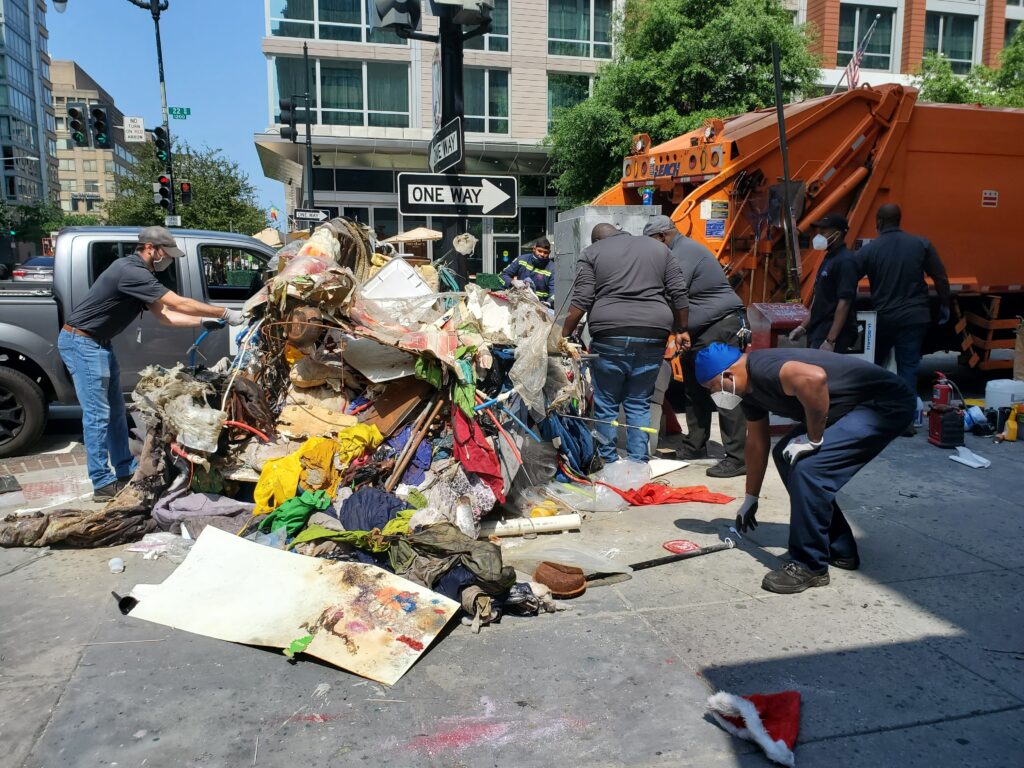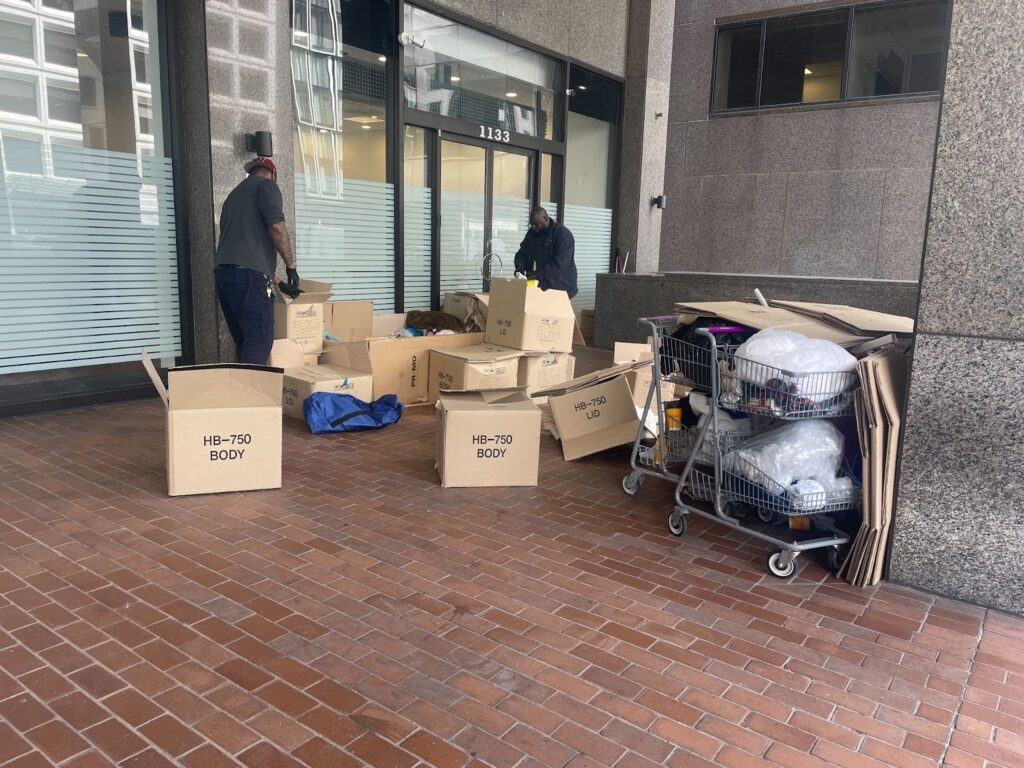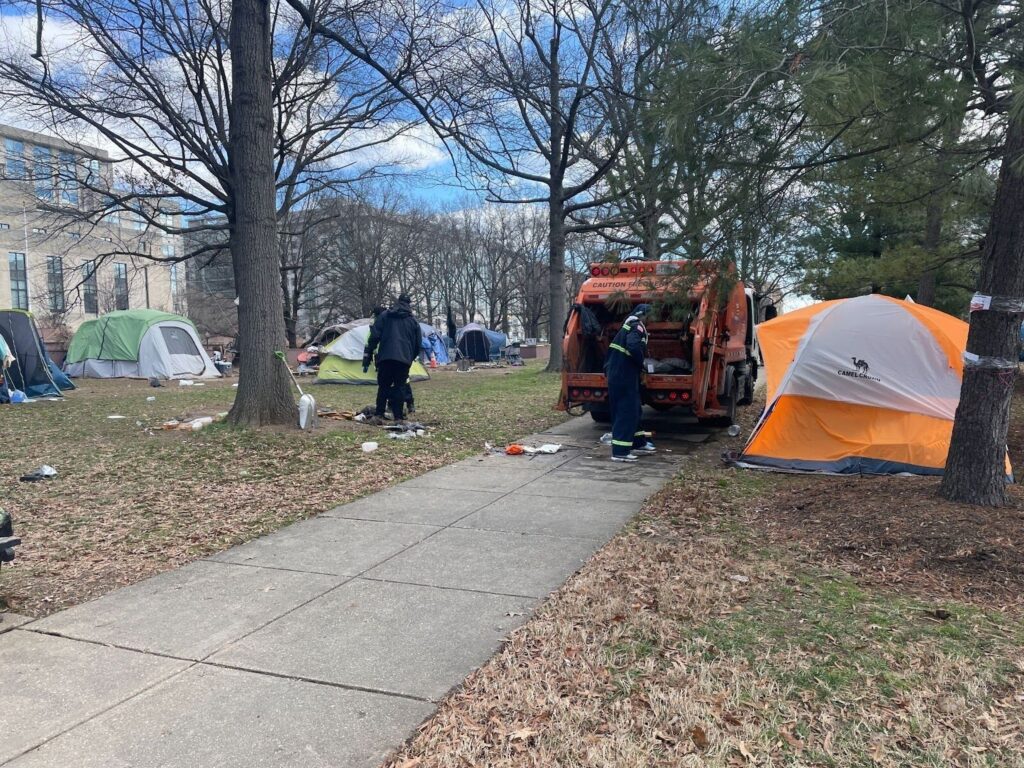A man living in a tent on the edge of D.C.’s West End got up around 9:30 Thursday morning and gathered his belongings at the curb of M St. NW.
By 10:50 a.m., workers from the Office of the Deputy Mayor for Health and Human Services (DMHHS) and the Department of Public Works (DPW) pulled down the umbrella roof and plastic sheeting walls of the tent and loaded them in the garbage truck.
They had disposed of the man’s possessions: a sculpture of foam insulation and glitter, a soup pot and a fuchsia bedspread. Spilled red and silver glitter glistened on the sidewalk. The man stood to the side and watched, recording the proceedings with his cell phone.
Passersby stopped to watch the clearing. Some held up their phones to snap photos and record videos. A mother from Sweden stood on the corner and watched as city workers dismantled the man’s shelter. Her children stood next to her, confused. She tried to explain what they were seeing.

The man’s tent and belongings, including art being taken apart by DMHHS workers and thrown away in a garbage truck. Video by Athiyah Azeem
By noon, the corner where the man lived for years was empty.
The man declined to speak with DMHHS representatives as they prepared to clear him and his belongings from the corner. He also declined to speak with reporters from Street Sense Media.
DMHHS posted a notice beside the man’s tent at 22nd and M St NW on June 2. The department’s website categorized this clean up as “hazardous waste removal.”
Neighbors who know the man, a local painter and visual artist, told Street Sense they thought the “hazardous waste” referred to the painting supplies and bleach the artist kept in his tent. DMHHS workers on scene said they were not authorized to speak to the media, and referred reporters to their public information officer. The DMHHS contact did not respond to multiple requests for comment via email and phone.
A few mutual aid volunteers and homelessness outreach workers trickled onto the scene before the clean up began. Members of D.C. Ward Two Mutual Aid helped the man carry a new generator out of his tent and told him they would store it for him.
The District’s “Encampment Engagement Protocol” gives encampment residents the chance to have belongings stored for 60 days, but the man did not respond to DMHHS representatives who asked him if he needed storage.
A resident of the area expressed shock when he saw the encampment taken apart on his walk to work. He said he had seen the man and known him in the neighborhood for six years. The neighbor gave his name as Momo.
“He’s got nothing but this art that I see him do every day,” Momo said.
Another housed neighbor, Joewy Mumba, talked about the displaced man and spoke about his artwork. Mumba returned to D.C. after living in Atlanta for three years and found the man still living and working in the same spot.
“He’s like a staple of the community,” Mumba said. “He’s become a part of the community — never bothers anybody, keeps his place to himself most of the time. He’s always painting.”
Athiyah Azeem contributed to this report.








